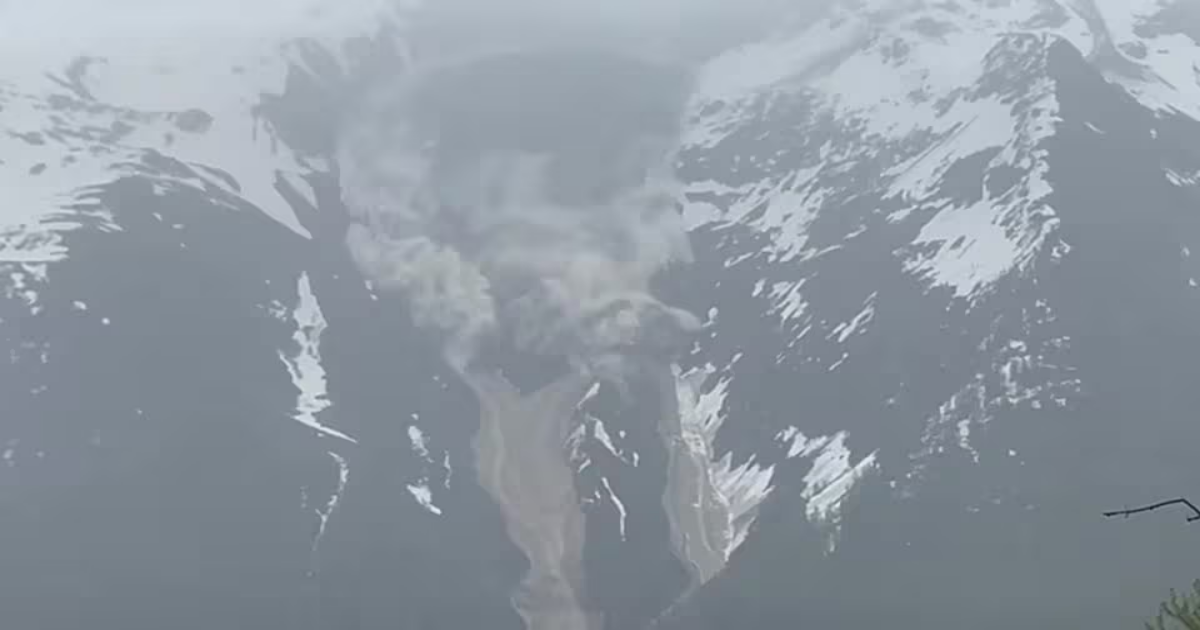For days, the inhabitants of Blatten, a village in the Swiss Alps, had been warned that an unstable glacier high above their homes could collapse.
On Wednesday afternoon, days after the village was evacuated, the glacier broke up under the weight of overlying rocks, burying it under some 3 million cubic meters of ice, rock and mud. Authorities said one person is missing but have not reported any confirmed casualties.
The trail of debris — which officials said stretched for more than a mile — blocked the river that flows through the village, flooding the few surviving structures.
“We have lost our village,” Blatten Mayor Matthias Bellwald said during an emotional news conference Wednesday evening, describing the destruction as extensive. He appealed for help to rebuild the village, which was evacuated days before after warnings from geologists.
Stéphane Ganzer, a councillor for the province of Valais, told Swiss media that the cascade of rubble buried about 90 percent of the village. Authorities suspect the collapse was caused by high-altitude snowmelt, but its precise trigger is unclear.
One person — a 64-year-old resident believed to have been in the area at the time of the collapse — was still missing, police said. In a statement Wednesday afternoon, police said they deployed a thermal drone and sent rescue specialists to locate him.
The debris from the collapse has also triggered a dangerous flood. On Thursday, officials in Valais warned that accumulation of material in the valley had blocked the Lonza River, which flows through the village, so a lake formed that flooded Blatten’s remaining buildings. Officials have increased the capacity of a downstream dam and evacuated nearby villagers, in case the water overflows.
According to Mylène Jacquemart, a glaciologist at the Federal Institute of Technology Zurich, the glacier was crushed and pushed down under the growing weight of overlying rocks.
“The rock slope above the glacier started to crack apart and fall down,” she said in a phone interview Thursday, explaining that rocks fell on top of the glacier over the past two weeks and eventually caused the glacier to give way. “Think of a giant pile of rock on top of a tiny glacier.”
The chain of events that triggered the glacier to dislodge when it did is not yet clear, however. “Whether it was simply the glacier collapsing under the weight of the overlaying material, or additional weight being put on it as maybe more material collapsed from above — we don’t know,” Jacquemart said.
The glacier’s collapse was so explosive that it corresponded to a 3.1-magnitude earthquake on Switzerland’s scale, according to the country’s Seismological Service. In a statement, the agency said the mass movement was one of the largest ever recorded in the country.
Experts are mixed in their views over whether the collapse was caused by climate change. Christophe Lambiel, a geologist at the University of Lausanne, told Switzerland’s national broadcaster that the glacier had previously been supported by a high rock face encased in permafrost, which had degraded over the past 10 to 15 years, putting pressure on the glacier. He said climate change “probably” played some role in the collapse.
Jacquemart said that it was not possible to tell without longer-term data, but she said: “The changes ongoing at high mountains are certainly not leading to more stable configurations. So there’s a possibility that climate change was an important factor, but we cannot say for certain.”
She pointed out that mountains undergo millennia-long cycles of growth and collapse as they strain under geological forces. “Pieces of mountains have to sometimes fall down; otherwise mountains would just grow forever,” she said. “Maybe the time was just right for this mountain to fall down.”
